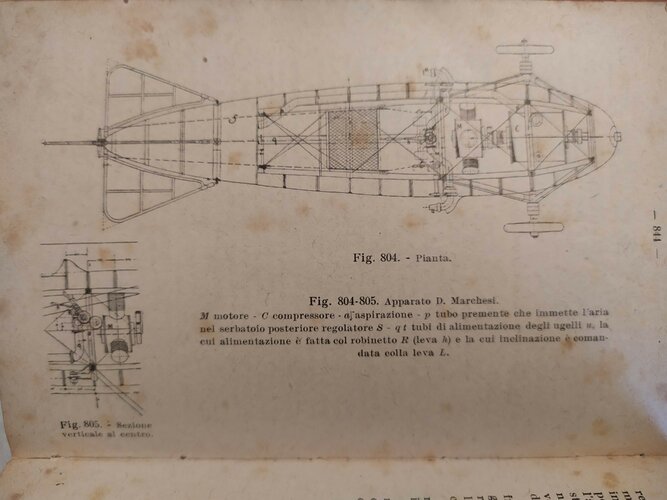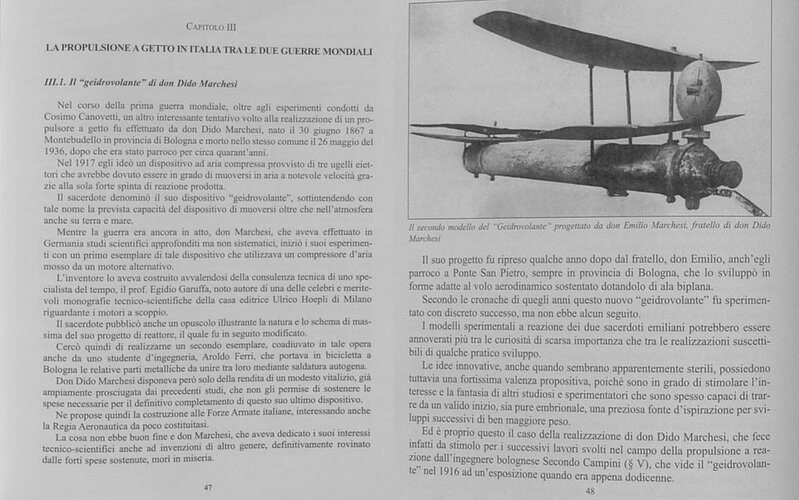Don Dido Marchesi, parish priest of Montebudello, a town in the Bolognese hills, was the first in Italy to experiment with a jet-powered flying machine.
In 1917 he published a study on a strange aircraft without propeller and without wings, equipped with an acetylene burst propeller, called a “geidroplane”.
In the utopian intentions of its inventor it is a multipurpose machine, capable of flying, navigating and racing on the road.
However, the experimental tests will not be crowned with success: one of the prototypes, powered by acetylene, will even explode. This will not prevent the priest-inventor from receiving the honor of Knight of the Crown in 1924.
I have found some information about this strange apparat. The plane had to lift only with the thrust of the air generated by the engine and blown through two nozzles on the fuselage sides and had no wings.
In 1917 he published a study on a strange aircraft without propeller and without wings, equipped with an acetylene burst propeller, called a “geidroplane”.
In the utopian intentions of its inventor it is a multipurpose machine, capable of flying, navigating and racing on the road.
However, the experimental tests will not be crowned with success: one of the prototypes, powered by acetylene, will even explode. This will not prevent the priest-inventor from receiving the honor of Knight of the Crown in 1924.
I have found some information about this strange apparat. The plane had to lift only with the thrust of the air generated by the engine and blown through two nozzles on the fuselage sides and had no wings.


